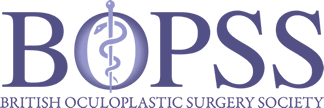| Title | Periosteal grafts for Fornix reconstruction |
| Submitted by | Katja Ullrich |
| Abstract Number | 110 |
| 19-129 | |
| Review Result | rapid fire presentation |
| Purpose | Fornix and socket reconstruction can be a challenge, regardless as to whether the cause is socket contraction or cicatrising disease. Options for large grafts with other than oral mucosa are limited and difficult to obtain. |
| Methods | We report a retrospective case series of three patients undergoing fornix reconstruction with use of periosteal grafts. Patients were aged 12, 42 and 77 years old, with indications of fire work injury, mucus membrane pemphigoid and chemical injury respectively. |
| Results | All patients underwent harvesting of periosteal flaps from the crown of their head or superiorly on the forehead as part of the harvest of a pericranial flap. There were no harvest site related discomfort affecting daily activities. |
| Conclusion | We present our experience with periosteal grafts for posterior lamella replacement and fornix reconstruction. Periosteum can be considered as an alternative to oral mucous membrane in selected cases. Peri-operative antibiotics and possibly, corticosteroids may be of value in these cases. The risks and benefits of bolsters are debatable. |
Additional Authors
| Last name | Initials | City / Hospital | Department |
|---|---|---|---|
| Malhotra | R | Queen Victoria Hospital NHS Foundation Trust | Corneoplastics Unit |

